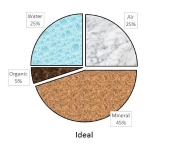
 1
1




Zone 6, 3600' elevation Appalachian Hardwood Cove, Western North Carolina
http://www.medicinecountyherbs.com/




Idle dreamer




Tyler Ludens wrote:I use buried wood beds and as far as I can tell, have never experienced anaerobic conditions. But I think I have a lot of worms and other critters moving around in the soil.
https://permies.com/t/52077/hugelkultur/Buried-Wood-Beds
Zone 6, 3600' elevation Appalachian Hardwood Cove, Western North Carolina
http://www.medicinecountyherbs.com/




Idle dreamer
 1
1








D Tyler Huff
Mossy Stone Farms
http://www.mossystonefarms.jimdo.com
Catskills, New York State




Sometimes the answer is nothing

 1
1


















|
What is that? Is that a mongol horde? Can we fend them off with this tiny ad?
Got a New Homestead? Here is What You Need to Know to Before You Start a Homestead
https://permies.com/t/97104/Starting-homestead-strong-foundation
|



